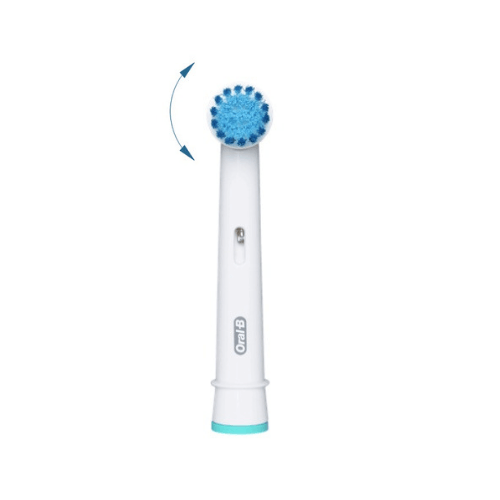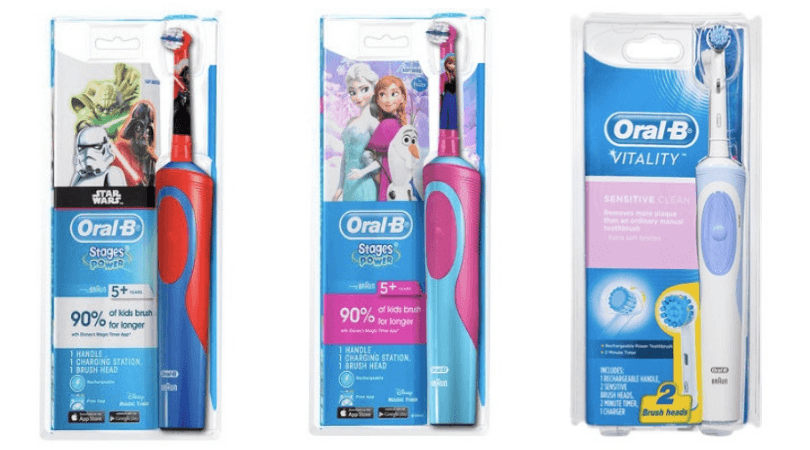Are electric toothbrushes better for kids?
Are electric toothbrushes better for kids?
The good news is YES, electric toothbrushes have significant advantages over manual toothbrushes, and there’s good evidence to back it up. We recommend starting your child as early as they will tolerate it.
How do electric toothbrushes help?
To understand more about why electric toothbrushes work better for many children, it’s important to remember the WHY and HOW of toothbrushing.
Bacteria or germs are in everyone’s mouth. In order to stay alive, bacteria must find somewhere to live. In the mouth, the easiest spots to cling on to are the teeth. Teeth provide a whole host of areas that bacteria can live – in grooves and fissures, between teeth and on the gum line.
Once they’ve stumbled upon a place to hang out, they set about dividing into new versions of themselves and inviting all their friends to the party.
Like human parties, it often starts out with just a small number of close friends that are basically harmless. With time, food, drink and ‘accidentally’ announcing the party to all your friends on Instagram, there may be a whole lot of unwanted guests on your doorstep causing trouble.
The latecomers of the bacterial world join together to form a film called plaque. Plaque is very sticky, hard to see and hard to remove. The areas of thickest and most damaging plaque are often found on the gumline.
So let’s imagine the steps required for a child to remove this plaque.
Firstly, toothpaste needs to be applied (on the brush, not all over the sink and up the walls). Then methodically and meticulously (neither attributes being common in children), the lips must be moved out of the way and the toothbrush placed on the gumline and moved in small circles.
For more info on how much toothpaste to apply, click here.
The toothbrush needs to be moved around the mouth, still moving in circles and not skipping over any teeth, brushing the outside, inside and chewing surfaces. Most kids are lost well before this stage and turn to repurpose their toothbrush as a sword, microphone or just simply wet it and pop it back in the holder hoping for the best.
When you think about the underdeveloped fine motor skills, concentration span and sometimes lacklustre motivation of many children, it’s easy to see how toothbrushing is often vastly ineffective.
The complex skills required for toothbrushing take many years to develop, and this is one reason why we recommend that a parent brushes for their child at least until the age of 8 years. Kids should only be given the go-ahead for independent toothbrushing if they can demonstrate effective plaque removal.
Our experience is that when we ask a child to demonstrate their brushing for us as part of a check-up, children as old as 12 & 13 years are frequently unable to carry out effective brushing. It’s important to be aware of the skill level of your child in regards to toothbrushing, and be willing to jump in at those evil bookend times of the day and help until they’ve got it under control. Just because your child can sit in the driver’s seat moving the steering wheel doesn’t mean they’re driving the car!
Go with a device that does most of the hard work for you!

Benefits of electric toothbrushes:
They take most of the more complex fine motor skills required for toothbrushing out of the equation. Round, oscillating type electric toothbrush heads do the small circles for you. All your child needs to do is be able to aim in the right places (following the gum line and on the chewing surfaces).
Most have a built-in 2-minute timer, which is the absolute minimum time required for effective plaque removal. This is for a child who has all of the other skills under their belt (concentrating, not brushing the same favourite/easy-to-reach area over and over etc.)
It makes it easier for you to brush for your child. Brushing someone else’s teeth is always going to be more difficult than doing your own. After all, most adults are unlikely to sabotage their own brushing by biting the toothbrush, complaining about how spicy the toothpaste is, running away, moving their head frantically side to side to create a moving target, interrupting to ask ‘is it finished yet?’, whinging about how it’s hurting or closing up for that extra surprise element of brushing without being able to see.
Also, there’s a fair bit of real scientific evidence.
The evidence
The results of a Cochrane Review* demonstrated that powered toothbrushes show a statistically significant benefit when compared to manual toothbrushes with regard to the reduction of plaque and gingivitis in both the short and long term. The authors found an 11% reduction in plaque in the short-term and a 21% reduction in plaque in the long-term (>3 months).
Bear in mind that many of these studies were carried out in adults who you’d imagine had basic toothbrushing skills under control. The benefits we’ve seen in hundreds of our patients who have swapped over to electric toothbrushes are far greater.  The best results were found with rotation oscillation heads (where the brush head rotates in one direction and then the other).
The best results were found with rotation oscillation heads (where the brush head rotates in one direction and then the other).
Electric toothbrushes we recommend:

The Oral B Stages and Vitality range.
The Vitality Sensitive is particularly good for older kids who don’t want a character brush. This is the brush I use at home.
I have no affiliation with Oral B (in fact I find the marketing surrounding oral hygiene products questionable). I just find their toothbrushes to be perfectly functional and start at a good price point for a child’s toothbrush. Shaver Shop often has the best deals (about $23 when on sale).
The Stages range specify ages 5+ years but I started my son at 18 months of age. You should be able to use it as soon as it’s tolerated.
Take home advice:
- Start your child on an electric toothbrush, they’re ace
- Rotation oscillating type heads show the best results
- Brush FOR your child (not just supervise) until at least 8 years of age
- Brush twice a day for 2 minutes
*Powered versus manual toothbrushing for oral health. Yaacob M, Worthington HV, Deacon SA, Deery C, Walmsley AD, Robinson PG, Glenny AM. Cochrane Database of Systematic Reviews 2014, Issue 6. Art. No.: CD002281. www.cochranelibrary.com
